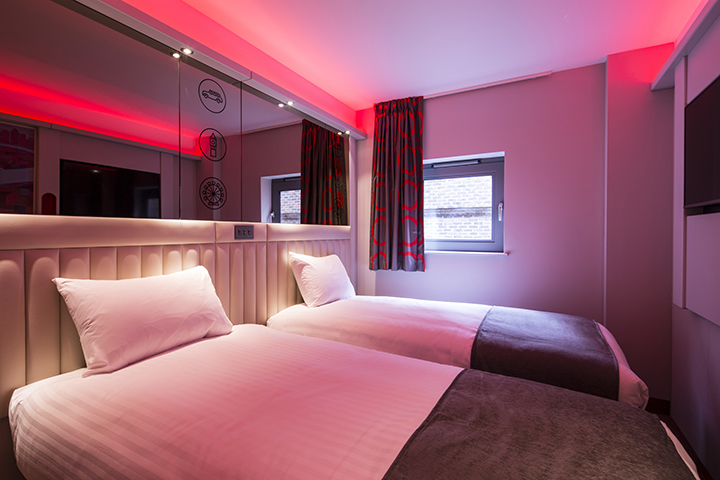Q&A with Ian Jones, Nova Interiors
The Introduction of a New Material to a Product Designer…
Ian Jones, Product Designer for Nova Interiors has given us an insight to being introduced to an interesting new material Kydex® and it’s use in his project with Point A.
Ian Jones is a graduate of Sheffield Hallam University with a first class honours degree in Product Design: Furniture, with particular interests in sustainable and inclusive design. His role with Nova Interiors includes, designing and supplying furniture and project managing for the contract design industry.
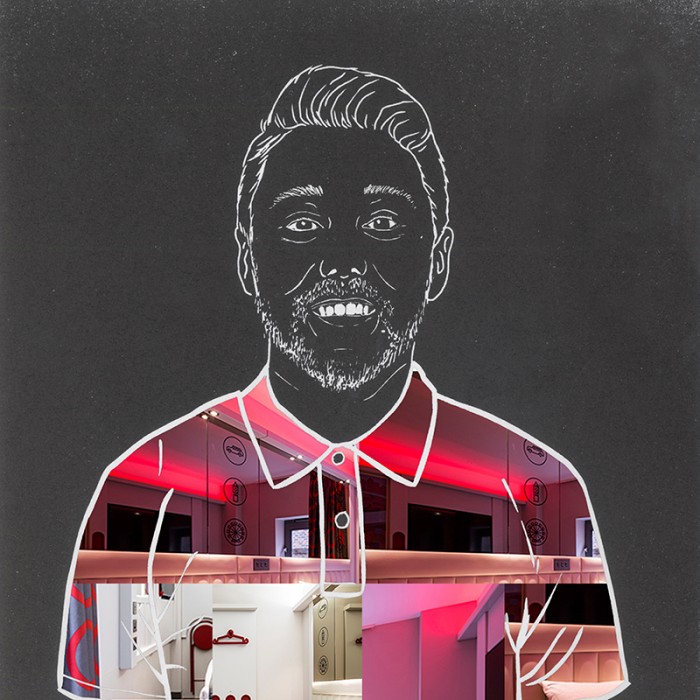
What was your role as Product Designer?
My role as Product Designer is to act as a problem solver. A tender was put out for The Point A project for the case goods element which Nova received. The client already had a design concept to use the Kydex® Sheet. It was my job to design a way the material could be used to it’s full potential. Personally, I never heard of the material before, but I did some research and the deeper I delved, the more enthusiastic I became. In all, I had to design panel variations due to a variety a room layouts due to not all bedrooms being the same.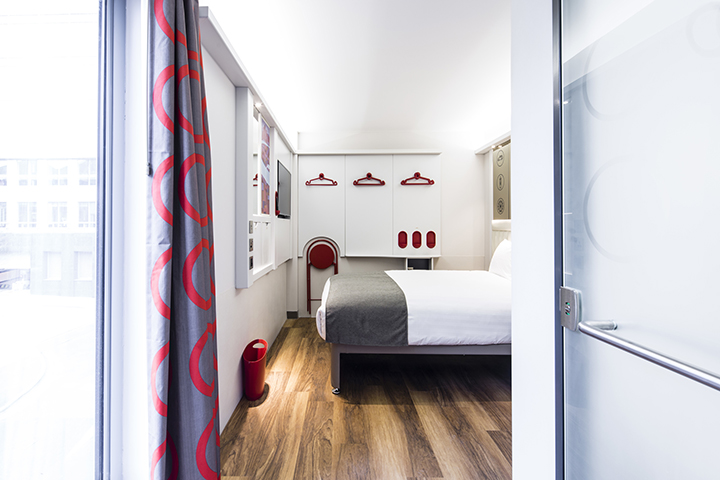 How did you incorporate the Kydex® Sheet into your designs?
How did you incorporate the Kydex® Sheet into your designs?
The Point A project had limitations due to extremely small bedrooms. It was impossible to get in and out of the room with a suitcase without potentially damaging the walls. The floor-plans narrowed down our options of using loose furnishings as everyday furniture would not withstand such impact or even fit in the bedrooms. Instead, I designed in-built amenities on MDF panels that had to be secured onto the walls. Because of it’s durable and lightweight reputation, I was confident with using Kydex® to protect the panels which housed the tv unit, shelves, storage, headboards, mirrors and information panels.
Where did you draw inspiration from for your designs?
Interestingly enough, when I researched Kydex®, there was a lot of information about gun/knife holsters and the interior of aeroplane cabins. To put things into perspective, the only way I can describe the size of The Point A bedrooms is to compare it to the cabins. I looked into how the tv monitors are housed on aeroplanes, how down lights are connected and controlled from the seats and how the overhead storage is built. As a point of reference, I kept going back to the interior design of aeroplanes for ideas to best utilise small spaces.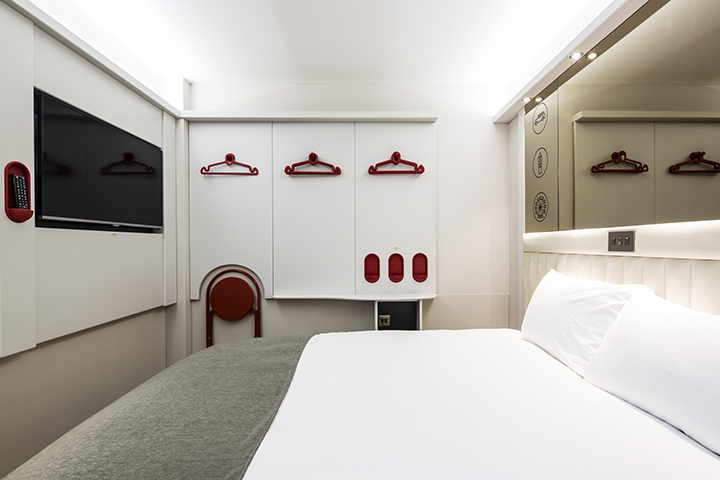 Were there any complications with using Kydex®?
Were there any complications with using Kydex®?
There will always be complications regardless of the material used. It is in all aspects part of the business. However, because of the scale of the project, we outsourced all the manufacturing which could not be done in our factory. From my knowledge, the manufacturers did experience difficulties but eventually, they pulled it off. We even made prototypes and built a Point A bedroom in one of their spare offices. From a manufacturing perspective, the MDF panels needed to be cut to size and the Kydex® sheet heat pressed onto it, and that was it – no polish, lacquer or paint.
How does Kydex® differ from other materials?
Firstly, Kydex® lacks artistic design. It usually comes in a standard colour however, there are a limited colours available. Simply put, it is a tough mouldable thermoplastic sheet that acts as a protective barrier. Unlike leather or nylon, handling Kydex® takes a lot of care, precision and industrial size machines for heat pressing. What makes Kydex® so different is it’s unbelievable durability. The construction site poses the most amount of threats when installing furniture but with the panels protected by Kydex®, the builders could throw it about without causing any damage.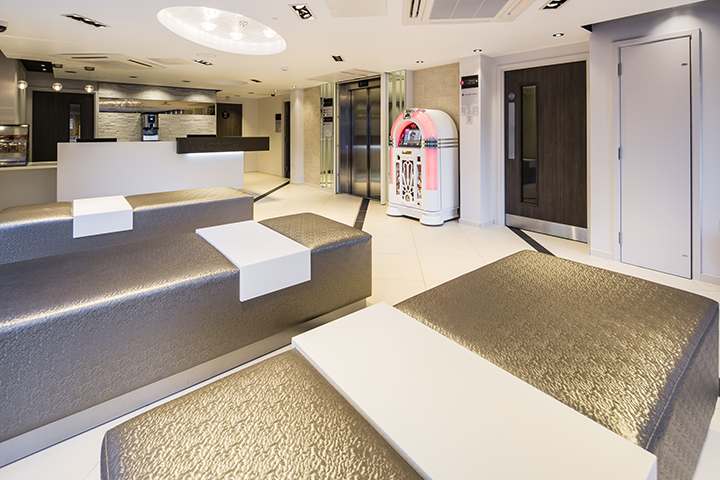 Could Kydex® be the next revolutionary material?
Could Kydex® be the next revolutionary material?
Kydex® is commonly used in the healthcare sector to laminate table tops, build reception desks and wall claddings. Product designers in the healthcare sector are aware if it’s super tough nature, fire resistant abilities and anti-bacterial properties so, in this sense, it is not revolutionary. However, the hospitality and leisure sector have yet to consider the use of Kydex®. The material worked perfectly for The Point A’s circumstances and resolved their issues surrounding tight spaces. In my opinion, if the Kydex®material had more design options then yes, it could be the next material trend in our sector.